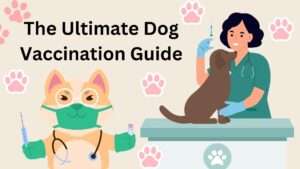Imagine your furry friend limping or favoring one leg while walking or running. It’s heartbreaking, isn’t it? One possible cause could be Luxating Patella, a common orthopedic condition in dogs. This guide delves into what luxating patella is, its causes, symptoms, diagnosis, treatment options, and preventive measures to keep your canine companion happy and healthy.
Contents Overview
Luxating patella, commonly known as a “trick knee,” is a condition prevalent in dogs, particularly smaller breeds. It occurs when the kneecap dislocates from its normal position, leading to mobility issues and discomfort. Factors contributing to this ailment include genetics and trauma. Symptoms may include limping, audible clicking sounds, and reluctance to bear weight on the affected leg. Treatment options range from conservative management, such as medication and physical therapy, to surgical intervention aimed at realigning the patella and restoring joint stability. Early detection and prompt veterinary care are crucial for managing luxating patella effectively and ensuring the well-being of your canine companion.
Understanding Luxating Patella
Luxating patella, often referred to as a “trick knee” or “floating kneecap,” is a common orthopedic condition that affects dogs, particularly small breeds. This condition involves the displacement of the kneecap (patella) from its normal position, leading to discomfort, pain, and hindrance in mobility for our beloved canine companions. In this blog post, we’ll delve into the definition, scope, and meaning of luxating patella in dogs, shedding light on its causes, symptoms, and potential implications for our furry friends.
Luxating patella occurs when the patella shifts out of its groove at the end of the thigh bone, failing to remain properly aligned. This displacement can vary in severity, ranging from occasional slipping to complete dislocation. While it primarily affects small dog breeds, larger breeds can also experience this condition.
Luxating patella is more than just a minor inconvenience for dogs. It can significantly impact their quality of life and overall well-being. Understanding the scope of this condition involves recognizing its prevalence, risk factors, and potential complications:
- Prevalence: Luxating patella is one of the most common orthopedic issues seen in dogs, particularly toy and small breeds.
- Risk Factors: Certain factors, such as genetics, anatomical abnormalities, and muscle weakness, contribute to the development of luxating patella.
- Complications: If left untreated, luxating patella can lead to chronic pain, joint instability, and even arthritis, compromising your dog’s ability to move comfortably.
For dogs diagnosed with luxating patella, the condition can have profound implications. It’s essential to understand the meaning of luxating patella from a canine perspective:
- Pain and Discomfort: Dogs with luxating patella may experience varying degrees of pain and discomfort, especially during physical activity.
- Limited Mobility: The displacement of the kneecap can cause limping, favoring of one leg, and difficulty walking or running.
- Impact on Quality of Life: Luxating patella can diminish a dog’s enjoyment of daily activities, affecting their overall happiness and well-being.
Causes of Luxating Patella in Dogs
Luxating patella, a common orthopedic issue in dogs, stems from various factors that affect the alignment and stability of the kneecap. Understanding these causes is crucial for both prevention and treatment. Let’s delve into the primary contributors to luxating patella in dogs:
Genetic Predisposition:
- Certain dog breeds are genetically predisposed to luxating patella. Small and toy breeds such as Chihuahuas, Pomeranians, and Yorkshire Terriers are particularly susceptible.
- Inherited traits, including skeletal structure and joint conformation, play a significant role in the development of luxating patella.
Anatomical Abnormalities:
- Dogs may be born with structural abnormalities in their knees, such as shallow grooves in the femur or misaligned tendons and ligaments.
- These anatomical irregularities compromise the patella’s ability to glide smoothly within the femoral groove, increasing the risk of luxation.
Muscle Weakness and Imbalance:
- Weakness or imbalance in the muscles surrounding the knee joint can exacerbate luxating patella.
- Insufficient muscle strength fails to provide adequate support and stabilization for the patella, leading to misalignment and displacement.
Traumatic Injury:
- Trauma to the knee, such as a fall, collision, or sudden impact, can disrupt the normal alignment of the patella.
- Injury-induced luxating patella may occur suddenly, even in dogs without preexisting predispositions or anatomical defects.
Growth Abnormalities:
- Rapid growth during puppyhood can contribute to the development of luxating patella.
- Excessive growth puts strain on the musculoskeletal system, potentially leading to structural abnormalities that affect joint integrity.
Overweight or Obesity:
- Excess body weight places undue stress on the joints, increasing the likelihood of luxating patella.
- Overweight or obese dogs are more susceptible to orthopedic issues due to the added strain on their skeletal system.
Age-related Degeneration:
- As dogs age, the cartilage and soft tissues supporting the knee joint may deteriorate, compromising joint stability.
- Age-related degeneration can exacerbate preexisting predispositions to luxating patella or contribute to its onset.
Identifying Symptoms of Luxating Patella
Luxating patella, although often asymptomatic in its early stages, can manifest through various signs indicating discomfort and hindrance in mobility for our furry friends. Recognizing these symptoms is crucial for timely intervention and management. Let’s explore the key indicators to watch for:
Limping or Lameness:
- Dogs with luxating patella may exhibit intermittent limping, favoring one leg over the other.
- The limp may come and go, depending on the severity of the patellar displacement and the dog’s activity level.
Skipping or Hopping:
- When walking or running, affected dogs may exhibit a skipping or hopping motion, particularly noticeable during periods of increased activity.
Reluctance to Bear Weight:
- Dogs with luxating patella may display reluctance or hesitance to bear weight on the affected leg.
- They may avoid putting pressure on the affected knee joint, opting to hold up the leg, or minimize movement.
Audible Clicking or Popping Sounds:
- Some dogs with luxating patella may produce audible clicking or popping sounds when moving their legs.
- These noises result from the patella shifting out of its normal position within the knee joint.
Difficulty Rising or Jumping:
- Dogs experiencing discomfort due to luxating patella may struggle to rise from a lying position or have difficulty jumping onto furniture or stairs.
Muscle Atrophy:
- Chronic luxating patella can lead to muscle atrophy in the affected leg, noticeable as a loss of muscle mass and tone.
- The weakened muscles contribute to joint instability and further exacerbate the condition.
Visible Signs of Pain or Discomfort:
- Dogs may exhibit signs of pain or discomfort, such as vocalization, panting, or changes in behavior, particularly after physical activity or prolonged periods of rest.
Stiffness or Decreased Mobility:
- Luxating patella can result in stiffness or decreased mobility, especially upon waking or after periods of inactivity.
- Dogs may exhibit reluctance to engage in physical activities they previously enjoyed.
Guarding or Protecting the Affected Leg:
- Dogs may instinctively guard or protect the affected leg, holding it close to their body or avoiding manipulation of the knee joint.
Visible Swelling or Enlargement:
- In severe cases of luxating patella, swelling or enlargement of the knee joint may be observed, indicating inflammation and joint instability.
Diagnosing Luxating Patella
Diagnosing luxating patella in dogs involves a thorough veterinary evaluation, including physical examination, imaging studies, and assessment of clinical signs. Here’s an overview of the diagnostic process:
Physical Examination:
- The veterinarian will begin by conducting a comprehensive physical examination of the dog.
- They will palpate the knee joint to assess the patella’s movement and evaluate for signs of discomfort or instability.
- Observing the dog’s gait and mobility during the examination can provide valuable clues suggestive of luxating patella.
Manipulation and Palpation:
- During the examination, the veterinarian will manipulate the dog’s knee joint to assess the patella’s position and mobility.
- They may gently attempt to luxate the patella manually to determine its ease of movement and assess the severity of the condition.
Radiographic Imaging:
- X-rays (radiographs) are essential for confirming the diagnosis of luxating patella and assessing its severity.
- X-rays provide detailed images of the knee joint, allowing the veterinarian to visualize the position of the patella, the depth of the femoral groove, and any associated structural abnormalities.
- X-rays may be taken in various positions, including standing, sitting, and flexed, to evaluate the patella’s alignment and stability under different conditions.
Sedation or Anesthesia (Optional):
- In some cases, sedation or anesthesia may be necessary to fully assess the patella’s mobility and stability.
- Anesthesia allows the veterinarian to manipulate the knee joint more extensively and accurately evaluate the severity of luxation.
Assessment of Clinical Signs:
- The veterinarian will consider the dog’s clinical signs, including limping, skipping, audible clicking sounds, and reluctance to bear weight on the affected leg.
- The presence and severity of these signs, along with the findings of the physical examination and imaging studies, contribute to the diagnosis of luxating patella.
Grading the Severity:
- Luxating patella is often graded based on its severity, ranging from Grade I (mild) to Grade IV (severe).
- The grading system helps veterinarians categorize the extent of patellar luxation and determine the most appropriate treatment approach.
Preventive Measures for Luxating Patella
While luxating patella may have genetic predispositions, there are several preventive measures dog owners can take to reduce the risk of this orthopedic condition and promote joint health. Here are some key strategies:
Responsible Breeding Practices:
- Work with reputable breeders who prioritize health screening and genetic testing to reduce the incidence of luxating patella in their breeding lines.
- Choose breeding pairs with sound orthopedic health and no history of luxating patella to minimize the likelihood of passing on predisposing factors to offspring.
Weight Management:
- Maintain your dog at a healthy weight to reduce stress on the joints and minimize the risk of orthopedic issues, including luxating patella.
- Feed a balanced diet tailored to your dog’s age, size, activity level, and nutritional needs to prevent obesity and maintain optimal body condition.
Regular Exercise:
- Engage your dog in regular, low-impact exercise to promote muscle strength, joint stability, and overall musculoskeletal health.
- Avoid activities that place excessive strain on the knees, such as jumping from heights or abrupt changes in direction, especially for breeds prone to luxating patella.
Joint Support Supplements:
- Consider incorporating joint support supplements into your dog’s diet, such as glucosamine, chondroitin, and omega-3 fatty acids.
- These supplements can help maintain joint health, reduce inflammation, and support cartilage integrity, potentially reducing the risk of luxating patella and other orthopedic conditions.
Environmental Modifications:
- Make environmental modifications to accommodate your dog’s needs, such as providing non-slip surfaces and ramps to minimize the risk of slips and falls.
- Ensure that your dog’s living space is safe and accessible, with minimal obstacles that could exacerbate joint strain or injury.
Regular Veterinary Checkups:
- Schedule routine veterinary examinations to monitor your dog’s musculoskeletal health and detect any signs of luxating patella or other orthopedic issues early on.
- Veterinarians can provide personalized recommendations based on your dog’s breed, age, lifestyle, and individual health status to optimize preventive care.
Early Intervention:
- If you notice any signs of discomfort, limping, or abnormal gait in your dog, seek veterinary attention promptly for evaluation and diagnosis.
- Early intervention and treatment can help prevent the progression of luxating patella and minimize its impact on your dog’s mobility and quality of life.
Treatment Options for Luxating Patella
Luxating patella in dogs can vary in severity, and treatment options depend on factors such as the grade of luxation, the dog’s age, overall health, and individual circumstances. Here are the primary treatment modalities available:
Conservative Management:
- Medication: Non-steroidal anti-inflammatory drugs (NSAIDs) and pain medications may be prescribed to alleviate discomfort and inflammation associated with luxating patella.
- Weight Management: Maintaining a healthy weight reduces stress on the joints and can help manage symptoms.
- Physical Therapy: Exercises to strengthen muscles around the knee joint and improve range of motion can be beneficial. Activities such as swimming and controlled walking may be recommended.
Surgical Intervention:
- Realigning Procedures: Surgical techniques aim to correct the alignment of the patella and deepen the groove it sits in, preventing further luxation.
- Medial Patellar Luxation Correction: Repositioning the patella to its correct position and stabilizing it with surgical techniques.
- Trochleoplasty: Deepening the groove in the femur to better accommodate the patella.
- Tibial Tuberosity Transposition (TTT): Moving the attachment point of the patellar ligament to a more stable location on the tibia, improving joint stability.
- Joint Reconstruction: In severe cases or when other procedures are ineffective, joint reconstruction may be necessary to restore normal joint function.
Combination Therapy:
- In some cases, a combination of surgical and conservative approaches may be recommended to optimize outcomes.
- For example, surgical correction followed by post-operative physical therapy and weight management can improve recovery and long-term joint health.
Follow-up Care and Monitoring:
- Regardless of the chosen treatment modality, regular veterinary follow-up appointments are essential to monitor progress, assess joint health, and adjust treatment as needed.
- Ongoing management may include lifestyle modifications, joint supplements, and periodic re-evaluation of the dog’s condition.
Preventive Measures:
- After treatment, implementing preventive measures such as weight management, appropriate exercise, and joint support can help minimize the risk of recurrence and promote long-term joint health.
Bottom Line
Luxating patella can significantly impact your dog’s quality of life, but early detection and appropriate management can make a world of difference. By understanding the causes, symptoms, diagnosis, and treatment options, you can ensure your furry companion receives the care they deserve. Stay vigilant, prioritize their well-being, and cherish every moment spent with your beloved pet.
Key Takeaways:
Understanding Luxating Patella
Luxating patella, also known as a “trick knee” or “floating kneecap,” is a common orthopedic condition in dogs, characterized by the displacement of the kneecap from its normal position.Causes and Risk Factors
Genetic predisposition, anatomical abnormalities, muscle weakness, trauma, growth abnormalities, overweight or obesity, and age-related degeneration are primary factors contributing to luxating patella in dogs.Recognizing Symptoms
Watch for signs such as limping, skipping, reluctance to bear weight, audible clicking sounds, difficulty rising or jumping, muscle atrophy, visible signs of pain or discomfort, stiffness, and guarding of the affected leg.Diagnosis
Diagnosis involves a thorough physical examination, manipulation and palpation of the knee joint, radiographic imaging (X-rays), assessment of clinical signs, and grading the severity of luxating patella.Treatment Options
Treatment modalities include conservative management (medication, weight management, physical therapy), surgical intervention (realignment procedures, tibial tuberosity transposition, joint reconstruction), combination therapy, and follow-up care.Preventive Measures
Preventive measures include responsible breeding practices, weight management, regular exercise, joint support supplements, environmental modifications, regular veterinary checkups, early intervention, and ongoing monitoring.Prognosis and Long-Term Management
The prognosis for dogs with luxating patella varies depending on the severity of the condition and the chosen treatment approach. Long-term management may involve lifestyle modifications, joint support, and periodic veterinary follow-up.Empowering Pet Owners
By staying informed, vigilant, and proactive, pet owners can play a crucial role in recognizing the signs of luxating patella, seeking timely veterinary care, and implementing preventive measures to promote their dog’s musculoskeletal health and overall well-being.

Ryan Farmer, DVM, is a veterinarian based in Houston, Texas. He earned his Doctor of Veterinary Medicine from the University of Missouri-Columbia and is the owner of EaDo Veterinary Clinic.



































+ There are no comments
Add yours